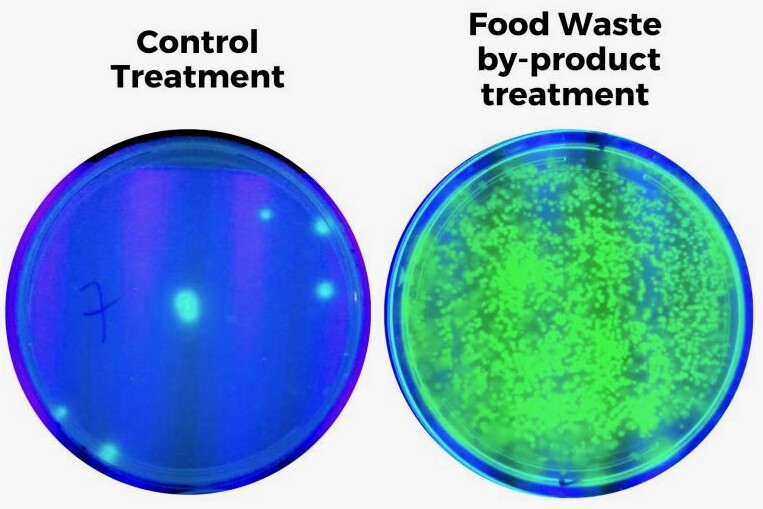Everyone already knows that compost made from food scraps helps plants to grow. Now, however, scientists have fermented food waste to create a liquid fertilizer that boosts the number of beneficial bacteria within the plants themselves, and in their soil.
Led by microbiologist Deborah Pagliaccia, researchers at the University of California-Riverside started with two types of food waste – mash left over from the beer production process, and mixed food items discarded by grocery stores. That waste was subjected to an anaerobic fermentation process, in which microbes rendered it into a liquid known as a digestate.
That liquid was then added to the water used to irrigate citrus plants in a greenhouse. It was a closed-loop irrigation system, meaning that water which ran out of the soil was pumped back around to be used again.
Within just 24 hours of the digestate being added, it was found that populations of beneficial bacteria within the plants and soil were two to three orders of magnitude greater than those in a control group of plants. Such bacteria produce compounds that not only help plants grow stronger and faster, but also make them more resistant to disease.

It was additionally observed that carbon levels in the water initially peaked after the digestate was added, then sharply decreased. This suggests that the bacteria were using that carbon to reproduce. And importantly, no harmful microbes such as Salmonella were detected anywhere within the system.
It is now hoped that once the technology is developed further, such fertilizers could reduce the need for or even replace conventional fertilizers, which are more expensive and less eco-friendly. Additionally, the digestate is made from waste that might otherwise simply end up in landfills.
"We must transition from our linear 'take-make-consume-dispose' economy to a circular one in which we use something and then find a new purpose for it," says Pagliaccia. "This process is critical to protecting our planet from constant depletion of natural resources and the threat of greenhouse gases."
A paper on the study was recently published in the journal Frontiers in Sustainable Food Systems.





